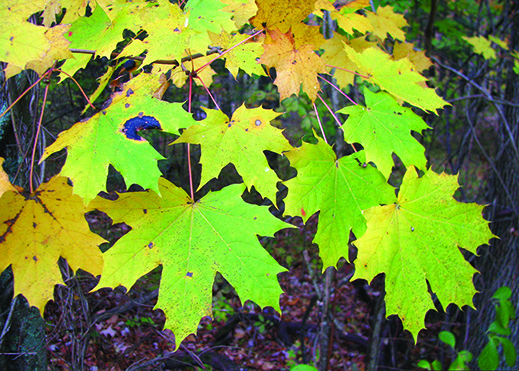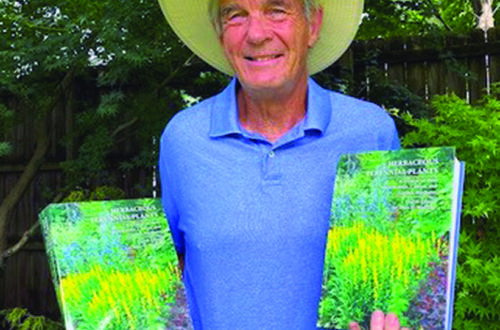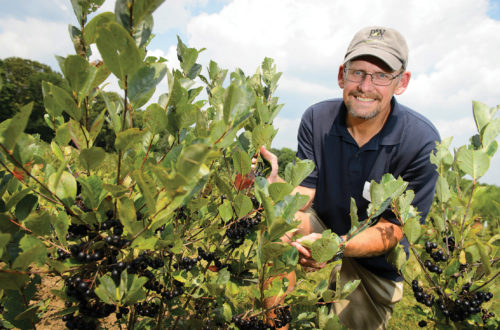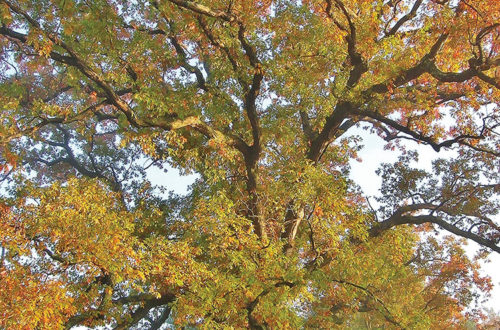Norway maple (Acer platanoides) was introduced as a shade tree in Philadelphia by John Bartram, a botanist and horticulturist who got the seeds from London in 1756.
It was routinely used as a replacement for elms felled by Dutch Elm Disease in the early 1900s. It’s now a common street tree. In fact, according to the Brooklyn Botanic Garden, it’s the most-planted street tree in the U.S. It’s probably even more common than we think because it’s often confused with other maples.
Most people probably don’t even realize it’s considered invasive in Connecticut. The tree is on our state’s official list of invasive plants but is not specifically banned. This is presumably because there are cultivars that are less aggressive or haven’t been evaluated.
There are now many cultivars available but even some of those can escape cultivation. The gardener concerned with biodiversity should look elsewhere.
The negatives outweigh the positives as far as this tree is concerned. Some people dislike it simply because it’s thuggish and messy. Reason enough, I suppose.
The Positives
• Highly adaptable
• Pollution and drought tolerant
• Makes a good shade tree
The Negatives
• Shallow root system competes with groundcovers and lawns for nutrients and moisture and makes the tree less stable in storms and floods.
• Outcompetes sugar maples and beeches and allows less biodiversity in its shade than native trees.
• Leafs out early, shading native spring ephemerals
• Susceptible to leaf scorch and anthracnose
• Susceptible to Verticillium wilt
(Verticillium spp.) and tar spot (Rhytisma spp.)
• Does not function as a contributing member of local ecosystems.
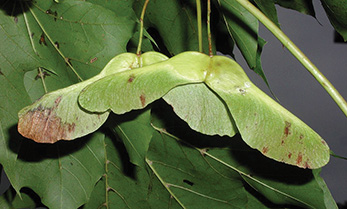
Identification
This tree, native to southern Scandinavia and Europe, grows to 50 feet or more.
The palmately lobed leaves (arranged oppositely) are usually 4-7 inches wide, wider than those of sugar maple. The leaves usually have five lobes. It leafs out earlier, and the leaves remain green longer than other maples. The fall color varies from yellow-green to yellow or tan. It doesn’t turn red or orange like other maples.
Unlike sugar maples, its sap is milky, evident when petioles or leaf veins are cut (unless it’s very dry). The small, pale yellow or yellow-green flowers are held in corymbs at the end of branches in spring. They can be rather showy when the whole tree is in flower. Its 2-inch wide winged seed capsules (samaras) are light green until the fall when they turn yellow and then brown.
Reproduction
• Suckers
• Wind-dispersed seeds
Control
Seedlings/saplings can be pulled or dug but will regrow if you don’t get everything. If the trunks are just a few inches wide, you can cut them and apply herbicide to the cut. Herbicides can also be carefully applied to larger trees after girdling the trunk with an axe or hatchet. If you cut them down you’ll have to watch for new growth.
For more information, or to check Connecticut’s Invasive Plant List, go to cipwg.uconn.edu
– Will Rowlands
